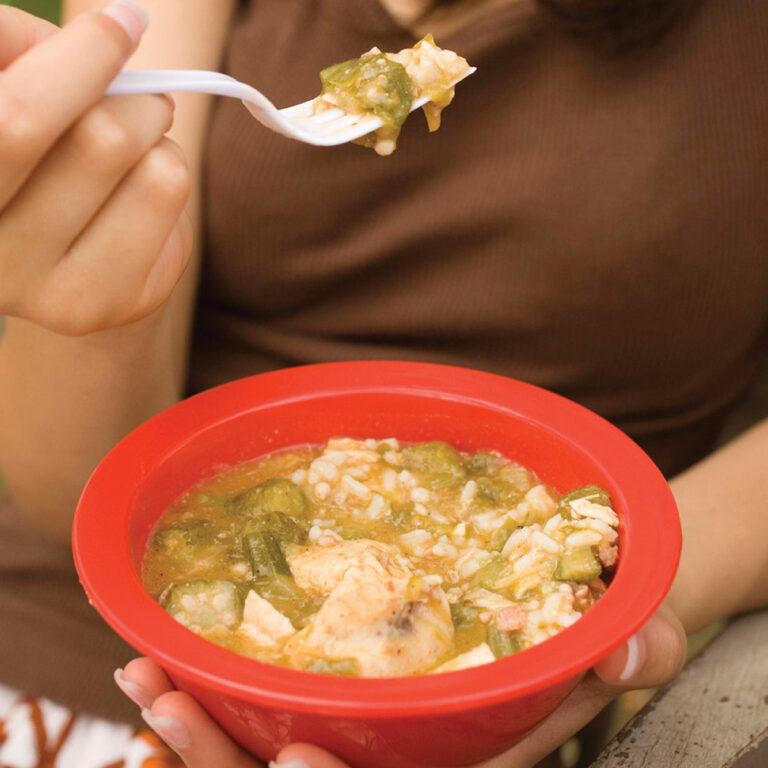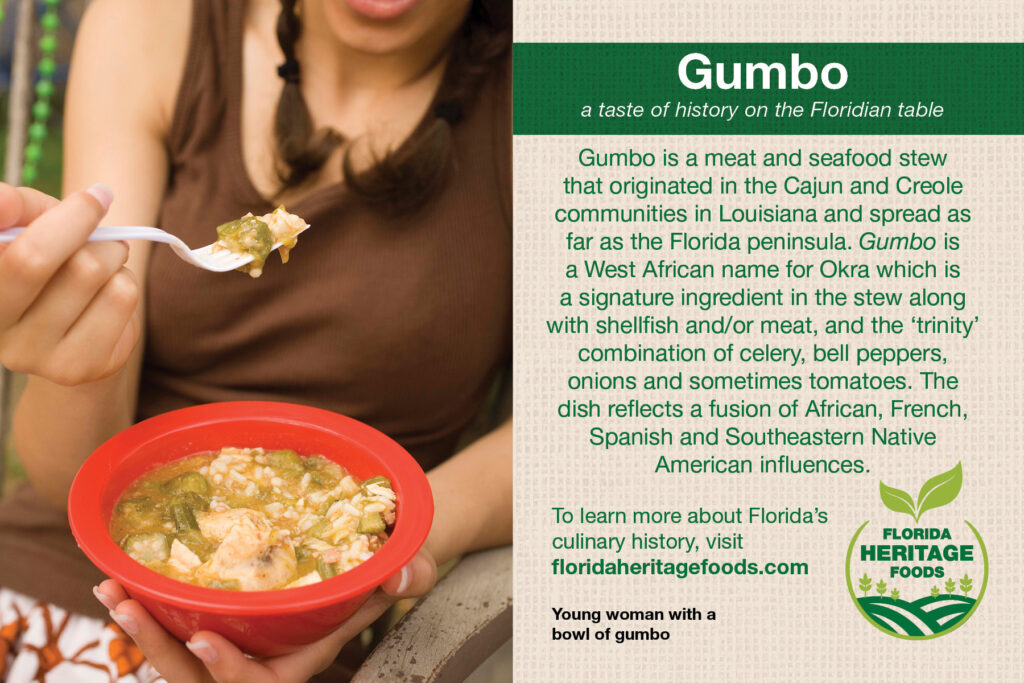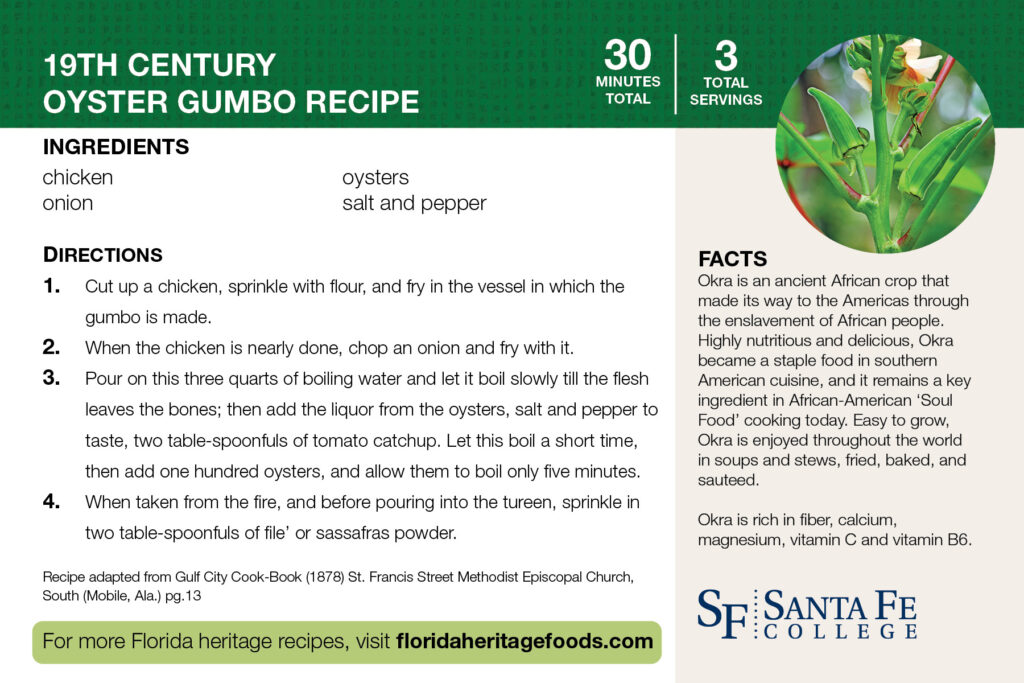Gumbo is a meat and seafood stew that originated in the Cajun and Creole communities in Louisiana and spread as far as the Florida peninsula. Gumbo is a West African name for Okra which is a signature ingredient in the stew along with shellfish and/or meat, and the ‘trinity’ combination of celery, bell peppers, onions and sometimes tomatoes. The dish reflects a fusion of African, French, Spanish and Southeastern Native American influences.

Gumbo is rooted in the culinary heritage of Cajun and Creole ethnic communities that resulted from the blend of French, Spanish, African and Native American people who settled in the Louisiana region during the 18th and 19th centuries. The coastal groups relied on fish, shrimp, crab and other marine resources as well as goods brought in by international traders coming to New Orleans. Okra, originating from Africa, was a common base and thickener for West African soups and stews, and people combined the okra base with readily available seafood and meat along with ingredients from Latin America such as peppers and tomatoes. Gumbo was first mentioned in print in 1802, and Mary Randolph’s The Virginia House-Wife, was the first to include a recipe for gumbo in 1824. In 1881 three different recipes, ‘Oyster Gumbo,’ ‘Chicken Gumbo’ and ‘Okra Gumbo’ were included in a cookbook dictated by former slave, Abby Fisher, entitled What Mrs. Fisher Knows About Old Southern Cooking. The dish gained national popularity after it was added to the White House menu in honor of Senator Allen Ellender from Louisiana, and it remains the national cuisine of Louisiana today. Gumbo remains popular in the Florida Panhandle where several gumbo cooking competitions continue to take place every year.
The iconic dish came to represent Cajun and Creole culture present in Louisiana and spread into the Florida Panhandle. The humble origins of the dish began with the frugality of poor working class and enslaved populations in the South, and its meat was generally limited to remnants of seafood and chicken as the primary protein. Gumbo is an economical dish because it makes use of small quantities of various left-over ingredients, and this made it an ideal meal to serve large groups on special occasions and social gatherings. As a result, to ‘have a gumbo’ is an historical idiom referring to forming social get-togethers and parties. Celery, onions and peppers are the primary base, and this combination of three ingredients is referred to as the ‘Holy Trinity’ of Cajun and Creole cooking. As the hearty stew made its way into urban and wealthy households, it took in a variety of new and more expensive ingredients such as beef and imported spices. In the 20th and 21st century, celebrity chefs helped place gumbo on the menu in restaurants and cafes throughout the country today.



Santa Fe College Partnered with Multiple Organizations in a Collaborative Effort to Bring Awareness of the Heritage Plants In Florida.
BY CULTURAL HISTORY
BY GROWING SEASON
DROUGHT TOLERANT PLANTS
Commitment to Equal Access and Equal Opportunity
Santa Fe College is committed to an environment that embraces diversity, respects the rights of all individuals, is open and accessible, and is free of harassment and discrimination. For more information, visit sfcollege.edu/eaeo or contact equity.officer@sfcollege.edu.
SACSCOC Accreditation Statement
Santa Fe College is accredited by the Southern Association of Colleges and Schools Commission on Colleges (SACSCOC). For more information, visit sfcollege.edu/sacscoc.
